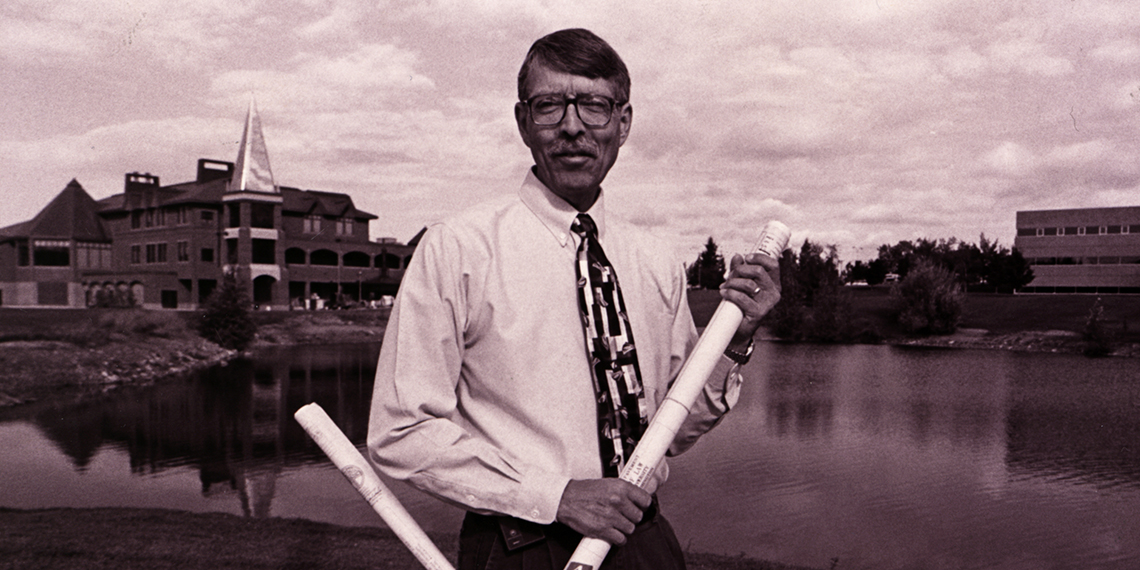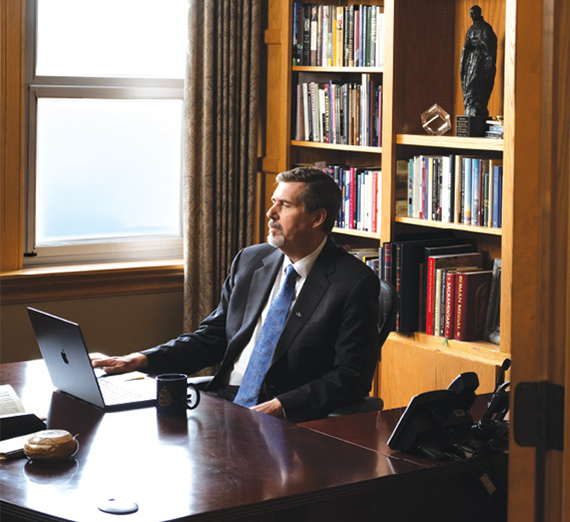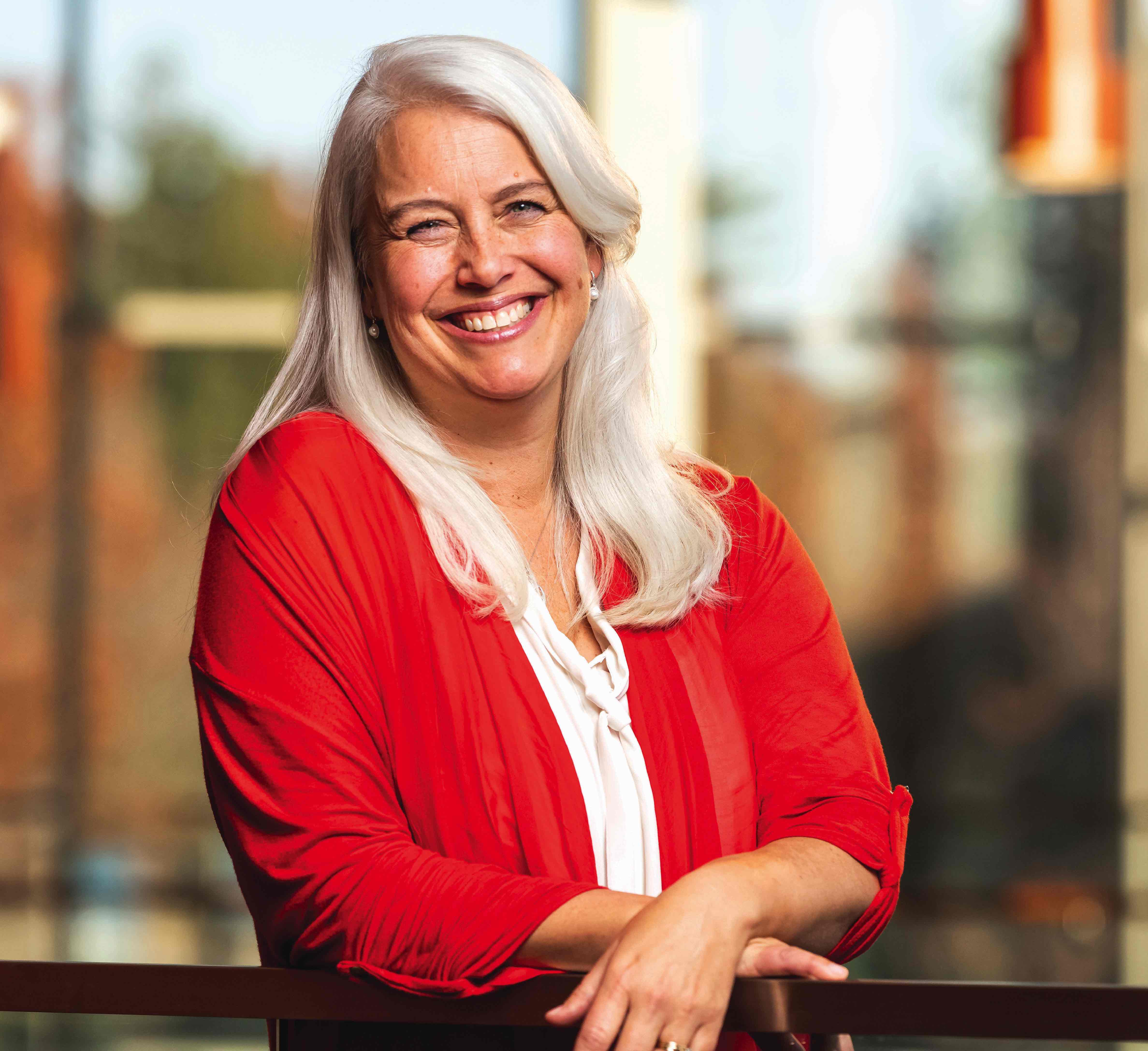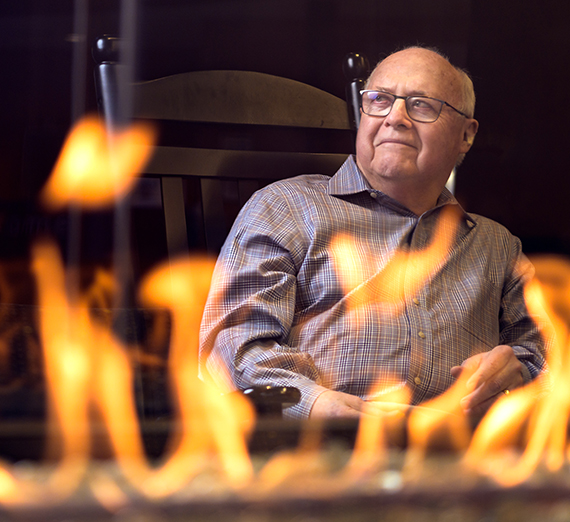Building a Legacy
Ken Sammons’ Monumental Impact on Gonzaga’s Campus

Ken Sammons played a sterling game of chess, moving his pieces around the chessboard (campus) methodically and strategically, in an orderly fashion that always had the best interests of the University in mind, says his longtime administrative coordinator, Julie Ullrich.
Sammons retired on December 31, 2024. Most of what he did for 55 years on the job, a lot of which was overseeing Plant and Construction Services, was behind the scenes, quietly ensuring the 100 buildings and 150 acres of beautiful grounds were in tiptop shape for the students, faculty and staff who spent their days, months and years here.
With experience in stagecraft in the theater arts department at Shadle Park High School, and his education in engineering as a Gonzaga student, one of his first projects was helping to renovate Russell Theatre, now Magnuson Theatre in College Hall.
He oversaw the design and construction of, or major renovations to, more than three dozen buildings and fields on campus and shifted the credit to others. Equally important to Sammons was making sure resources were available to maintain and upgrade the structures, their systems and operations.
He undoubtedly put in more steps on Gonzaga’s campus than anyone in University history. As the campus expanded over his time here (1967-2024), so did his average daily step count. He’d pick up every piece of garbage he passed on daily walks, and trim shrubs or pull weeds along the way, often on weekends.
He knew every heating and cooling system, where every water main and electrical vault was housed, where every underground tunnel system led, and the kind of windows and doors in every Gonzaga building. Sammons and his stellar department guided significant impact on energy conservation and the carbon footprint of our campus for the last dozen years or more.
Historically, he was one of the campuses’ best sources of University history, his 55 years as an employee second only to former Vice President Fr. Art Dussault, S.J., 1926-1992.
He was the picture of calm and composure. He worked cordially answering every question posed to him by the Trustees and Regents. He was a source of wisdom and perspective to administration.
When the ice storm struck Spokane and Gonzaga’s campus in 1996, Sammons made sure generators were set up and operating effectively to keep students fed and warm. With the Kennedy Apartments more than 75% built in 2006, a fire burned the structure to its foundation. “Ken was the voice of calm during the inferno,” Ullrich recalls, “creating a plan to dust ourselves off and rebuild the entire structure in a year’s time.”
When the 2008 snowstorm tried to bury the city, Sammons and his crew coordinated snow load testing on roofs, and he called in favors with local landscaping companies for help with roof snow removal. In 2020, it was COVID-19 that paralyzed Gonzaga only for a brief time before the University created plans to reopen in fall 2020. Plant Services was ready to pack up student rooms, catalog every item, and either store content until campus reopened or ship belongings home to campus residents. “Working with limited crews, the department made sure the lights were kept on at this ghost town of campus over the spring and summer months,” Ullrich says.
Campus Architect (1992-2018) Mac McCandless appreciated Sammons’ attention to campus aesthetics – reintroducing campus borders with stone walls, iron fences, granite or concrete balls atop original brick pedestals, and shrubs and trees strategically placed, new landscaping to enhance GU’s park-like setting and moving parking lots to the campus perimeter to mitigate pedestrian-car conflicts and noise.
Gonzaga is like a small city of 8,500 people, McCandless describes. “Cities boast a mayor and city council, and many directors. At Gonzaga, Sammons has served as director of public works, streets and utilities, engineering, parks, and planning and zoning,” all rolled into one.
“Ken cared for our campus as if it were his personal responsibility,” says Chief Strategy Officer Chuck Murphy, who served as Sammons' supervisor for a good share of his time here.
“To him it was not just a job. It was both his vocation and avocation. He was a true servant leader in every way.”
Tomson Spink (’96) is an engineer Sammons first met when Spink was a project manager for Garco Construction building Gonzaga’s McCarthey Athletic Center in 2002-2004. Following a family tragedy, Spink left general contracting to pursue a career in higher education projects, first working for Eastern Washington University. “But I always stayed in contact with Ken,” Spink recalls.
“When a management position opened here Ken graciously called me and the rest is history.”
Spink started at Gonzaga in December 2011, and most recently has served as maintenance manager, before replacing Sammons as assistant vice president of Plant Operations, Planning and Construction Services in November.
- Spirit




